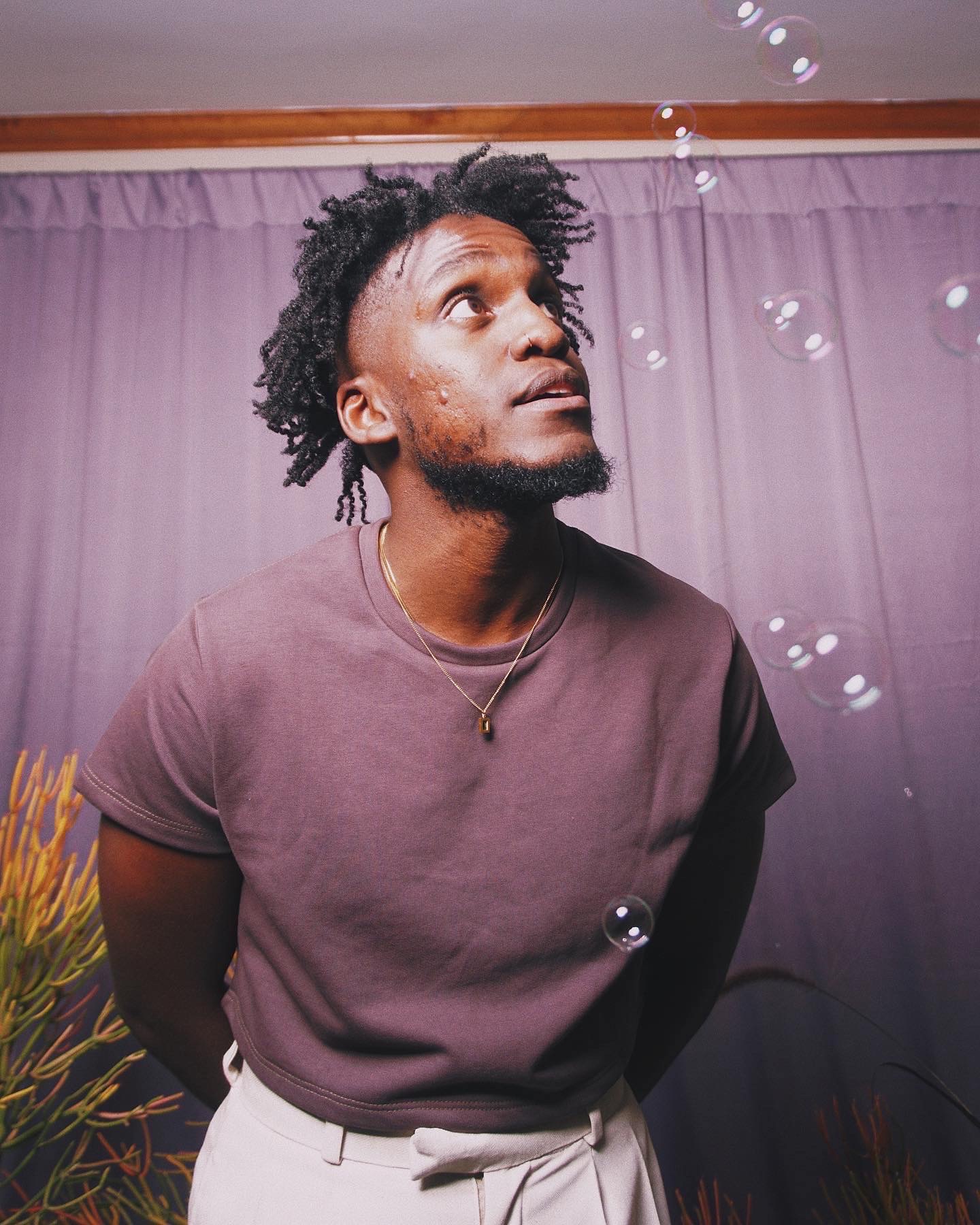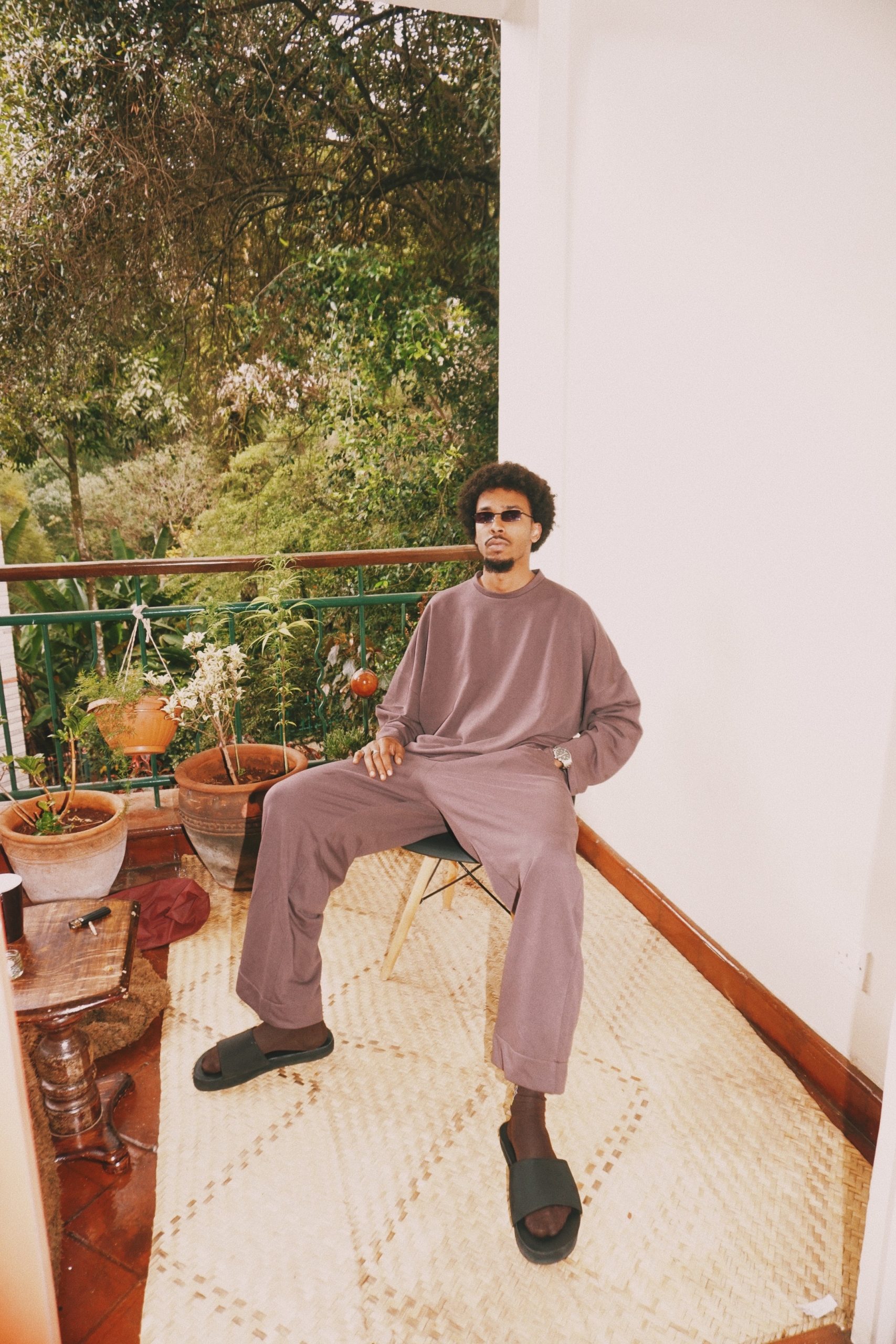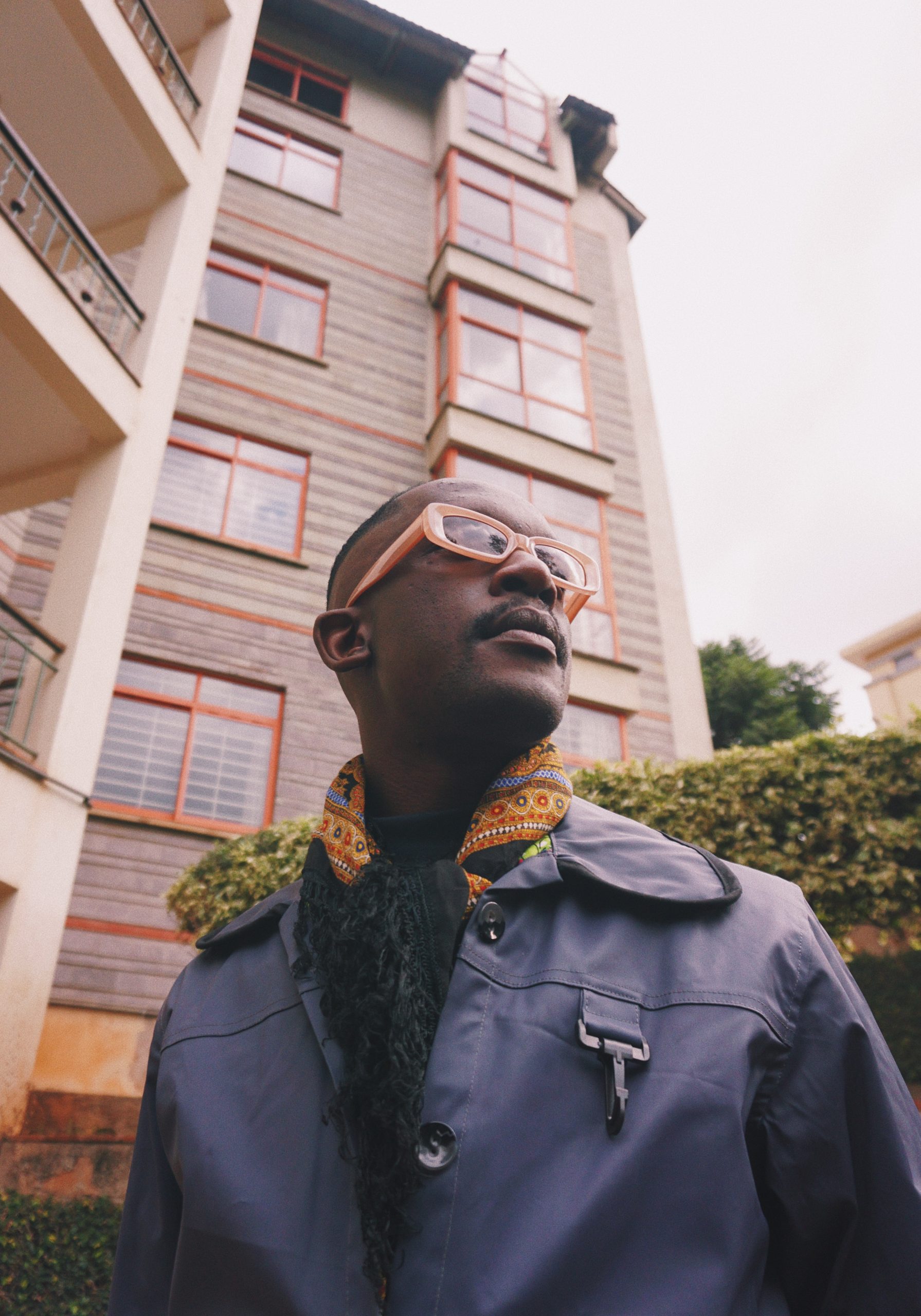While spending the majority of his time as an intellectual property consultant, Patrick Hawi was increasingly At Odds with the mundanity of a 9-5 life. While his IP background involved helping fashion brands set up their business, he yearned for something bigger and bolder to contribute to Kenya’s relatively young, yet burgeoning fashion scene.
“When I got into the corporate world, I realised that whatever you do in life, you’re going to have to put the work in. So I’d rather create my own path and work towards something that’s gonna fulfil me more, instead of carrying on with an ‘ordinary life’. So I knew then that I finally wanted to create my brand”, Hawi shares.

“Our slogan is ‘don’t be standard, stand out’, which is enshrined in everything I make. I want to make people feel extraordinary wearing my items. And I want to make extraordinary high-quality clothes”. After years of sketches, fabric sourcing, and product testing, Hawi finally launched At Odds in March 2021. Since its first collection, the brand has caught the attention of the British Fashion Council and dressed Kenyan musicians such as Bensoul and Mau from Nowhere. In sum, the brand’s recognisable, ready-to-wear pieces have steadily evolved into a bridge between luxury and accessible fashion to meet the demand for locally produced clothing.
We recently caught up with Hawi to discuss the highs and lows of his journey as a self-taught fashion designer and what lessons he’d like to impart to young African designers from his expertise as an intellectual property lawyer.
How did you finally start At Odds?
Patrick Hawi: My first order of business was researching clothes production here in Kenya. In the past two years or so, there’s been a growing demand for made-in-Kenya clothing. People don’t mind spending that extra bit of money on clothes that look good but allow people to have wearable memorabilia from “home”. After my research, I spotted a gap in the fashion market for ready-to-wear items that were the bridge between affordable and luxury items. My vision for At Odds was to have high-quality, yet accessible clothes.
To be frank, if I started my brand three or four years ago, I don’t think it would have been as well received as it is now if there wasn’t a hunger for locally produced fashion.

Your first drop consisted of a collection of jackets. Why was that your first product of choice?
Patrick Hawi: I first experimented with t-shirts and shirts but it wasn’t really giving the kind of impact you’d want with your first product. After going back to the drawing board, I decided that my first drop would consist of the Hawi 1 jackets. Looking back, I really hit the jackpot with the jackets. At the time, I didn’t have a massive budget for marketing but the jackets were such a statement piece that they did the marketing for me. Every time I wore my jacket out in Nairobi, someone would ask me where I bought it because no one had really seen a jacket like that. Using primary colours like red, yellow and green was also a smart move because they are classic but eye-catching colourways. That is what built momentum for the brand.
I eventually decided to expand the collection to other items because there are only so many jackets you can sell within a period of time. Now, we sell a lot of high-quality t-shirts made from durable fabrics where people are able to recognise us for the quality of our clothes.
What has been your highlight since founding the brand?
Patrick Hawi: At the beginning of the year, I was selected for the British Council Creative DNA programme to support upcoming fashion business in Kenya which was super insightful. The programme was administered by convenors who are pioneers in the Kenyan fashion industry. It inspired me to expand my product range so that if someone doesn’t opt for the jackets, there are other items in our permanent collection that they can buy.
It also enriched me with a sense of community, meeting 19 other like-minded designers, which I felt was lacking. So if I’m having a popup, I’ll invite the other brands that we’ve been working with, so now it’s like having a support system within a big family.

What has been your biggest challenge running the brand?
Patrick Hawi: I still suffer from normal business challenges. Sometimes I don’t have good cash flow and cash is key in terms of moving things quickly. So if I don’t have the funds to do it, you won’t be able to finish production and fund photoshoots for the marketing process. That sometimes reduces your ability at the speed at which the business is able to grow.
How I navigate the shortfall in cash is by developing new business strategies based on “slow fashion” such as stocking up all the fabrics I need for two quarters instead of one or restocking the same items instead of debuting a new collection. For example, this year we’ve only done two collections. We’re probably not going to drop another collection until next year but just stock up in terms of new colourways from stuff we already have.
What’s your design process like?
Patrick Hawi: Like any other designer, my design process begins with sketches. Most of the stuff I’ve dropped is from drawings I made two-three years ago which I shelved because I wasn’t able to get the correct kind of fabrics back then. We have very limited kinds of fabrics here in Kenya because we don’t produce our own fabrics so finding the correct textile you want to work with can be tricky.
I’ve been really patient with my fabric selection in the past two years. I’d go out every weekend to different fabric shops to see if they have new, quality items I can use to create a full range of products. Between then, I’d test my designs with cheaper fabrics to see how they’d look so that when I found the right materials I could begin the production process. I wore my jacket for one year consecutively to test how it wore out and if it fades. I eventually found the right fabrics and from there, I’ve been working with my manufacturer who is very skilled at creating patterns for clothes and we ran with it.

What advice would you give to upcoming African fashion designers from your background as an IP lawyer?
Patrick Hawi: Specialising in IP has allowed me to understand the rules that govern the industry from a legal perspective. My dissertation was on the protection of small fashion businesses in Europe and understanding how small businesses can best apply legal rules to protect our brands from exploitative industry practices like copyright infringement.
The first thing you need to do is make sure you’ve registered your trademark and have your business registered as well. These steps will allow you to invest in your brand because designs are very seasonable but your brand is where your value as a fashion brand lies. Secondly, if you have a signature design that you plan on using for a number of years, you can register the design. This will exclude other people from using the design and it would give you exclusive rights to the design for a substantial period of time.
What are your future plans for At Odds?
A short-term goal that I’m working towards is investing in our physical presence. We’ve primarily existed online since we opened, except for some popups here and there. I’d like to open a physical shop and stock our items with a bigger retailer.
Apart from that, we’re focused on growing our market share. We’ve been interacting with age groups between 20-32 and trying to increase that gap a little more because we’ve realised that individuals that are a bit older really appreciate our items.
This story is produced in the context of an editorial residency supported by Pro Helvetia Johannesburg, the Swiss Arts Council.




















































